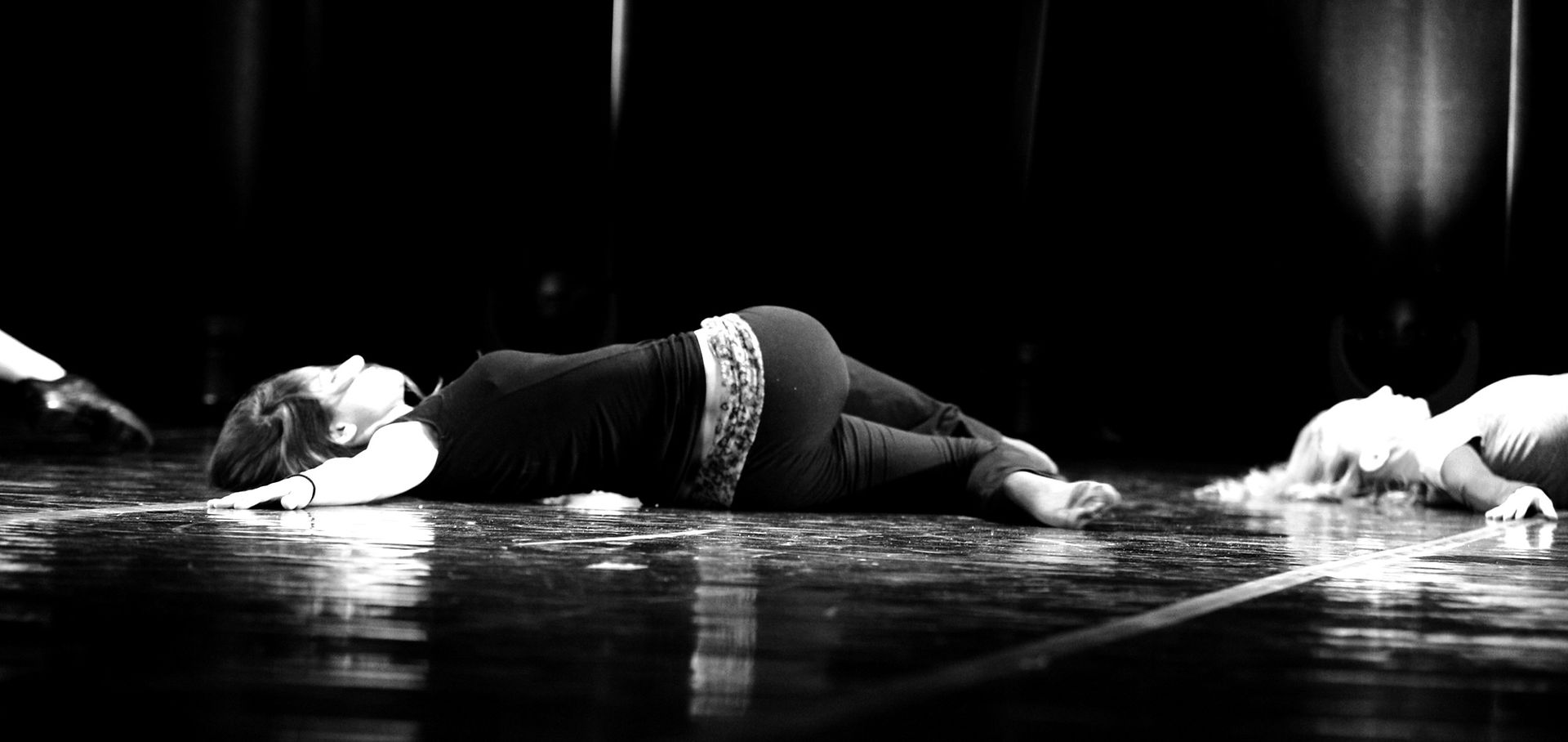
Was ist jomdance?
jazz-oriental-modern-dance = jomdance
Nach 15 Jahren Oriental-Tanz auf damals schon hohem Niveau dachte Said el Amir, er hätte alles gelernt, was man im Oriental-Tanz so lernen kann... bis zu dem Zeitpunkt, an dem er die dreiwöchige Summer School an der renommierten Schule Iwanson in München besuchte. Diese intensive Schulung veränderte sein Weltbild und sein Verständnis für Bühnentanz im Allgemeinen und im Speziellen.
Ja, die Tradition, die Folklore und die Raffinesse im Oriental-Tanz war sicher und fundiert vorhanden. Doch die Welt des Bühnentanzes aus Sicht des Contemporary Dance, des Jazz Dance und des zeitgenössischen Balletts eröffneten ganz neue Dimensionen für den Oriental-Tanz und dessen Renommé.
Folgerichtig und konsequent absolvierte Said 2,5 Jahre Techniktraining mit täglich 6 Stunden Unterricht in Ballett, Jazz Dance, Modern Dance, Contemporary Dance, Tanzmedizin und Tanzpädagogik an der Iwanson-Schule.
Warum jomdance?
Tradition trifft Bühnen-Knowhow
Nach schon wenigen Workshops im In- und Ausland zum Thema „Westliche Einflüsse im Oriental-Tanz“ wurde klar, dass hier ein enormer Bedarf, ein großer Wissensdurst und eine sehr große Lücke im Bereich der befähigten Performer, respektive Lehrenden gab.
In den ersten Jahren der 2000er kamen zunehmend orientalische Einflüsse in die westliche Musik und umgekehrt westliche Einflüsse in die orientalische Musik. Die Diskrepanz zwischen tänzerischem Knowhow, um die Musik adäquat interpretieren zu können, und den Darbietungen seitens Oriental-Tänzerinnen und -Tänzern auf Bühnen wurde immer größer.
So entwickelte Said aufbauend auf dem Ausbildungskonzept von ESTODA - ESsential Technique of Oriental DAnce - aus dem Jahre 1996, welches er zusammen mit Yasmin al Ghazali 2001 auf den Markt brachte, 2004 die zweijährige, berufsbegleitende Ausbildung zur „jomdance-Bühnentänzerin“.
Der jomdance-Effekt
Augenöffnend, unterstützend, wegweisend - Nach jomdance ist nichts mehr wie es war
Obwohl der Oriental-Tanz im Ursprung kein Bühnentanz ist, entwickelte er sich in den letzten 100 Jahren zunehmend dorthin (1, 2), ohne jedoch jemals eine fundierte Anpassung seiner Darbietungsform zu erfahren.
Mahmoud Reda mit seiner Reda Troupe hat in den 1960er Jahren eine erste Form der Bühnendarbietung von Folkloretänzen entwickelt (3). Der Oriental-Tanz oder auch Raqs Sharqi hat diesbezüglich jedoch den Anschluss verpasst.
Früh haben führende Performer der Oriental-Tanz-Szene in Deutschland, Österreich und der Schweiz das Potenzial von jomdance erkannt und die Gunst der Stunde genutzt, die jomdance-Ausbildung von Said el Amir zu absolvieren. Als gute Tanzsparten-übergreifend ausgebildete Performer werden sie in großen Produktionen, wie denen der Bellydance Evolution von Jillina Carlano, immer wieder gerne gecastet. Einige von ihnen hatten bereits Hauptrollen inne und/oder wurden mehrfach aufgrund der herausragenden Tanztechniken in verschiedenen Disziplinen für Tanzproduktionen gecastet.
jomdancer sind mittlerweile international begehrte Performer und Lehrende.
Durch das intensive Training von Tanzsparten-übergreifendenen Techniken und dem entsprechenden, notwendigen Hintergrundwissen, das in der jomdance-Ausbildung vermittelt wird, hat sich die Darstellungsform des Oriental-Tanzes auf Bühnen seit 2004 in den deutschsprachigen Ländern maßgeblich gewandelt (4, 5). Namhafte Lehrende des Oriental-Tanzes sind in ihrem Unterricht konzeptionell und/oder inhaltlich vom pädagogisch-didaktischen Aufbau der jomdance- und der ESTODA-Ausbildung stark beeinflusst.
________
Referenzen
-
Gurel, P. (2016). Between Orientalism and Westernization: Belly Dance as a Transnational American Studies Case. Comparative American Studies An International Journal, 13(4), 1-19. https://doi.org/10.1080/14775700.2015.1178956
-
Ward, Heather D. (2018). Egyptian Belly Dance in Transition: The Raqṣ Sharqī Revolution, 1890-1930. McFarland & Company, Inc., Publishers. Kindle Edition.
-
Vermeyden, A. (2017). The Reda Folkloric Dance Troupe and Egyptian State Support During the Nasser Period. Dance Research Journal, 49(3), 24–37. https://doi.org/10.1017/S014976771700033X
-
Missura, M. (2010). Didaktische Methoden im orientalischen Tanzunterricht: Entwicklung, aktueller Stand und Prognosen [Diplomarbeit], Universität Bern.
-
Mittag, G. (2023). Kompetenzorientierte Unterrichtsmethoden im Middle Eastern Dance in Bezug auf die Befriedigung basispsychologischer Bedürfnisse Lernender (1126544) [Masterthesis]. Hamburger Fern-Hochschule.



